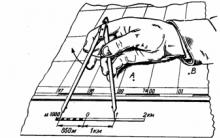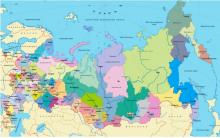"Jenga" is an extremely popular, meditative and at the same time gambling board game where you have to pull out blocks from a falling tower. In the process, the players act with bated breath, and the loss marks the roar of the collapsed structure.
Overview
The Jenga board game, also known as the Falling Tower (consonant with Django, Jengo toy, Jingle, Jinga, and Jumbo, is that too :), is pretty simple.
It is necessary to build a tower from wooden blocks, and then take the sticks out of the tower and place them on the upper floor. The structure will become more and more unstable until it collapses from careless movement or a breath of wind.
Basically, it is a bit like playing spillikins (with miniature dishes) or Mikado (using wooden skewers). The game takes an average of 5-10 minutes.
Who created
Wikipedia writes that the game "Jenga" was invented by an Englishwoman of Tanzanian origin Leslie Scott in the early 1970s. Its progenitor was the cubes, which Leslie played as a child. The word "jenga" comes from the Swahili verb "to build". The game is produced by one of Hasbro's subsidiaries, replicas from Igrotime are popular in Russia.
From what age
You can play jenga from the moment when your fine motor skills have developed enough. For the first time, you can build a tower at the age of five, although it is hardly worth an adult to compete with an impatient toddler.
What's in the box

In the package with the board game you will find (photo above):
54 wooden blocks, easy to remove. Their size is about 8 centimeters in length, length and width have a ratio of 3: 1. In the original, bamboo is used, in Russian replicas, birch is more often;
cardboard sleeve for the construction of a flat tower, it is also an instruction.
Rules and description
In the "Falling Tower" the rules are clear for both the preschooler and the grandmother, both in Russian and in English. It is necessary to build a tower of bars with the inscription "jenga", laying out three bricks in a row, on them - three bricks perpendicularly. There are 18 floors in total.
Next, you need to pull out one piece at a time from the body and arrange it at the very top so that the skyscraper resists. You can touch the tower, try on, touch the bricks that you are going to pull out, but only with one hand. The main thing is not to drop it. Dropped - lost. After each move, you need to wait 10 seconds, and only then pass the move on.
Sometimes Jenga is played using a grid not 3 by 3, but 4 by 4 bars. Then, in the process, a wonderfully intricate structure can turn out, the fall of which will be simply epochal.
There are other options for how to play the tower. For example, buy a set with numbers on dice and take out not random blocks, but the one whose number fell out.

Game mechanics
In the game "jenga" players have to show miracles of dexterity, to demonstrate the accuracy of movements and fine motor skills. Knowledge of physics and the ability to see a thing in volume, to calculate a balance will also come in handy.
Tricks and secrets
The rules of the game describe only the general principle of action, but experienced players know that there are subtleties:
Do not rush, why! The main thing is accuracy, so try on as much as you see fit;
Try how firmly the bricks sit. Some can be pulled out easily, some cannot. If the block does not want to go - do not pull it, otherwise you will almost certainly bring everything down;

Try to build a tower not higher, but more stable. This will make the game last longer. Or, on the contrary, do a wobbly crown, hoping that your opponent will not be able to repeat your trick;
If you push the center blocks instead of the side blocks, the chance of collapse is reduced.
The jenga board game is unpredictable because a millimeter error can be worth winning. The original Jenga even keeps the exact dimensions of the wooden blocks under wraps. Allegedly, each brick is slightly different from the other, so that there is no exact balance and it is not possible to choose a uniquely winning strategy. However, a banal production error has the same effect.
The most intense moment
The most interesting thing begins when the falling tower has already been skewed in order, and every movement can bring it down. Will this come from a retrievable bar, which, as it turned out, held everything on itself. Or the building will collapse when the player has already pulled out a brick, put it on the roof and exhaled with relief.
How to diversify the gameplay
When you get bored with basic fun, bring in fresh ideas. It will become more fun and difficult if you add the following points to the rules:
- Write numbers on the ends of the pieces of wood, throw dice and pull strictly dropped;
- Write tasks on pieces of paper and take them before each move. For example, do everything with your left hand or sing a song in the process;
- Assignments or questions can be applied directly to the bars;
- Not to build on, but to dismantle the tower from below until there are so many holes in it that it collapses.

How to increase interest
It quickly becomes boring to move the wooden blocks just like that. The way out is to come up with a prize. For example, desire. Something large-scale - like the obligation to wash all the dishes after a party. Participants will fight with passion to the last brick!
How else to use
With small children, you can use Jenga as a construction set and a toy, build houses together with turrets, and then, optionally, take out the bricks as usual. The kids will be happy to take up the new building material (more than environmentally friendly), and at the same time they will learn the numbers if the bars are numbered. Additional cubes with numbers will help in this. There are also children's options with colorful and very beautiful cubes.
Who lost
Ay-i-i-yay, our pyramid collapsed! Big "Boom"! Who is guilty? Who was not careful enough? In whose turn did a fly fly past, and from the vibrations of the air, a catastrophe occurred? So he lost.
Additional materials
Playing Jenga is more than just stacking bars on top of one another. It's a fun activity with a strong competitive edge. In addition, you can always diversify it.
The secret of popularity
There are several secrets of Jenga's popularity:
- Very simple and straightforward rules, anyone can play it;
- It does not require a special place, except for a flat hard surface - for example, a floor;
- Despite the transience of each batch, it is addictive for hours;
- Consists of ecological materials, the details are pleasant to the touch;
- You can upgrade the kit, but not buy a new one;
- The best players are the most agile and the luckiest at the same time;
- Very good reviews!
Benefit from playing the Leaning Tower of Pisa regularly
The tower under construction for adults and children is a great shared activity. And for the party too.
Disassembling a block structure trains concentration and fine motor skills well. The player has to show everything that he is capable of.
The construction of the turret promotes the development of spatial thinking. We learn to imagine what exactly we get if we take out a part from one position and move it to another.
Other advantages
The jenga game is very addicting. It is simply impossible to break away - well, another five minutes, well, another game.
Everyone, young and old, can play Jenga. Which makes the desire to fold a tower of wooden blocks a versatile family entertainment.
The number of participants is not limited - although if there are many of them, it is not a fact that the move will reach everyone. But the one who got the chance will certainly try to concentrate with the top piece in his hands and not succumb to the “encouraging” exclamations around like “Rush her!”.
Today I want to tell you about an interesting game for two or a large company - Tower... Other names - "Tower", "Jenga", "Jenga", "Knock Down". We bought this game a year ago and never regretted it, it brought us a lot of funny minutes (as well as funny photos).
Tower game rules (Tower, Jenga)
Tower consists of 54 wooden blocks, they are laid out 3 on top of each other close to each other (layers must be perpendicular) and form a tall beautiful tower of 18 floors. Now the players take turns taking out one block from any place in the tower (except for the two upper ones, it's too easy) and place them on the top floor of the tower. Important note: You only need to take out the block with one hand, the second hand lies quietly and does not help to hold the tower, insure, and so on. But your one playing hand can do whatever it wants - poke at all the blocks to check which one is loose, correct the protruding pieces of the tower and whatever it wants. It is allowed to stop halfway reaching the bar if you feel in this the threat of the destruction of the turret.
Who Lost?
The game ends the fall of the tower, the one who was the culprit of this lost, that is, he tried to get his bar, and this entailed destruction. 
In this case, even a situation in which only one block fell, with the exception of the one that they tried to get, is considered a loss. True, this is a rarity. In 95% of cases, the entire tower collapses epically and with a crash.
At what point is it especially interesting to play
It is interesting to become when the tower specifically grows - or maybe it grows in height and three times. Then she literally hangs on by a thread and each player feels great tension during his move and great joy if he managed to fish out a bar without consequences. And also, when the opponent walks, we usually have a cheerful encouragement: "Come on, come on, destroy it already!" and inside there is such a hope that the move will not reach you. After all, the situation only gets worse with each move.

How to increase interest
Play on wish! How many household issues we have solved in the course of this game! And I washed the floors, and the dishes, and cleaned the apartment :))) But without tears and resentment against my husband, because in a fair fight everything was decided. No, of course, he actually laughed at me and went to help. In a large company, we love to play, who will wash the dishes after our gathering, then everyone play with passion, if only not to lose, because this is at stake! And when all these options get bored and you don't know what else to think about, then you can for every block put a number and make a sheet with transcripts, or even take a task for forfeits. At the time of the destruction of the tower, they look at the block with which number remained in their hands, the task under this number will have to be completed.
From what age
Our two-year-old son loves to play this game, it has already begun to turn out well. I think from three - this will already be a full-fledged player. The biggest problem is that the second pen is constantly trying to help, but of course we allow :)
How else to use

When we saw this game on sale, the question of whether or not to take it was not even a question, because for a long time they wanted a wooden construction set for a child, and in comparison with a construction set of a similar volume, the tower came out twice cheaper! As a result, we took the tower and it turned out two in one. The son almost every day asks to get the tower and uses it in all games. Builds roads, houses, barriers and simply carries them in a truck, loading them with a tractor with a bucket.
Watch the video how to play the wooden Jenga Tower
How much does the Tower cost?
Now there are varieties of this game, for example, the very gambling version of Jenga Boom, where the tension only increases. You can get acquainted with the prices for the game Tower and make a purchase decision in the table below.
| The shops | What sets | Price | |
|---|---|---|---|
 |
Classic Jenga, Jenga BOOM | 970 -1400 rub | |
Many have tried their hand at an exciting game at least once, where manual dexterity and a clear mind are the main keys to success. A popular game originally from the 70s, it was invented by the Englishwoman Leslie Scott when she was still little. Usually children are attracted to the game from 5-6 years old, but from experience, a developed three-year-old is able to understand the rules.
As a standard, 54 wooden blocks are used for the game, less often - 48 or 60. The width of each piece of wood is three times less than its length and two times its height. This is important in order to build a level tower. The goal of the game is to take turns to get the bars from the built tower and move them up. With each stroke, the instability of the structure grows upward.
Rules of the game
You can play from 2 people, the optimal number of players is 3-5. First you need to choose what will build the structure. He will make the first move. The participant lays out pieces of wood in 18 floors, 3 on each. In the first row, the bars are laid in parallel, in the second - perpendicularly and so on in turn.
In a clockwise direction, the participants pull out one element from the structure (with the exception of the first 2 upper floors) and place it at the top of the tower. Only one hand participates in the game: it is forbidden to hold, pull out with two. After each player's action, it is necessary to wait 10 seconds - if the structure does not fall, the right to move goes to the next one. The game ends when the structure collapses - the player whose move was at the moment of the fall is considered a loser.
Jenga - the secrets of the game
Jenga is not a game where beginners are lucky. However, to win, you will need not only experience, but also attentiveness and luck. There are several tips to help you emerge victorious from the game:
- remember that loose elements do not have to be at the top or at the edges. Don't forget to check the middle of the tower;
- it is safer to pick out the side bars, and push out the central ones;
- the smoother and softer your movements, the more chances that the structure will not collapse. Sudden movements are dangerous destruction;
- when the structure begins to tilt, inspect the opposite side - several free bars will appear there;
- do not forget that your goal is to win at any cost, so substitute opponents, take risks and aggravate the slope of the tower. However, first think about whether the structure will collapse on your move.
These little tricks will help you become a winner. In addition, we note that this exciting game is recommended by experts for home collections of board games, as it has a positive effect on the brain and fine motor skills.
How to win at Jenga?
In the age of computer games, when children and adults do not crawl out of gadgets, it becomes a complete revelation for many that in addition to many similar online strategies and shooters, there is an equally attractive world of board games that can captivate people of any age and gender.
The most important and most valuable thing that board games can give is communication, which people are deprived of by their own smartphones.
We can say with confidence that such board games as Monopoly or Mafia can make you put your phones down and forget about them for long hours, especially if there is a cheerful company nearby!
In my opinion, perhaps the most perky and absorbing game is the recently widely known Jenga game. If someone else does not know, then Jenga is a set of blocks that fold into a tower. Once, to the seven-year-old daughter of our friends, they presented Jenga as a gift. At first, the child was not particularly happy with her, because he did not understand what to do with her. Adults came to help, and it was almost impossible to tear them away from the construction of the tower. Everyone was waiting for their turn to try their luck in the construction of a "skyscraper" from wooden blocks.
A bit of history
Jenga is a board game whose unusual name means "build" in Swahili. The idea for the game belongs to Leslie Scott, a British game designer of Tanzanian origin. As a child, she loved to collect pyramids from wooden cubes, which probably prompted her to create Jenga. The first batches of the game hit the shelves in London in 1983, later Hasbro acquired the rights to it.
The game gained wide popularity thanks to the very simple rules of the game, understandable to both adults and children. When folding the "floors" of the tower, three blocks in each, it is necessary to fold the tower, then it is necessary to shift the bars from the lower floors to the upper so that the tower does not fall. The loser is the one whose tower falls.

Way to victory
It would seem that everything is simple in this game, but even here there are tricks and ways to victory. And here we would like to offer you our strategy.
1. Take your time!
Don't push yourself. Leslie Scott makes the following recommendation: “If you rush to Jenga, you will lose more than you gain. Feel every brick and start with the ones that are easy to pull out. Leave the more stationary bars for later, when the weight of the tower is redistributed and they can be easily removed. "
2. No strategy
Forget about any strategy, just don't waste your time on it. Why? Because each bar is at least slightly different in weight and size from the rest, so all the towers that you will collect before starting the game will be different.
3. Higher does not mean better
Many people try to build the highest tower possible. This is where the mistake lies. The higher the tower, the more unstable it is.
4. Be nimble
The rules say that you can only use one hand when pulling the bars out of the tower. But hands in tension get tired, which can have a bad effect on the result. But the rules do not say anything about changing hands. Also, nowhere is it said that you cannot balance the tower with your shoulder, using your hand as a bracket.
5. Drive the tower

If it seems to you that there are no more available bricks left, it is quite possible to make them as such. How? For example, if the central block on the "floor" was removed, and there are two side blocks, clamp them from one edge (making them a diagonal in a square), and then remove one of them.
6. Distribute the load favorably
Placing blocks on top of a tower can give you an edge over your opponent. You can make it harder for your opponent by stacking the bars on only one side. But be careful, if your opponent copes with your trap, you may already be in a “shaky” situation.
From my own experience, I can say that the biggest difficulty in the game was coping with laughter, which in most cases was the reason for the loss.
You can buy in our store and try to implement the strategy of success in the game with your friends. Believe me, you are in a good mood!
Jenga Boom Board Game (Tower)
Hello dear friends! Today I want to tell you about an extremely exciting and at the same time very simple game with wooden blocks.
It is called Jenga and comes in many varieties. The popularity of this board game all over the world is due not only to the simple rules of the game, but also  many other advantages.
many other advantages.
But more on that below.
My review of the Jenga board game
What is Jenga?
Jenga is a board game for agility and ingenuity. The standard set consists of 54 wooden blocks, not varnished or painted in any colors. Also, each game set comes with a sleeve for building a tower and a booklet describing the rules of the game and various options for complicating or simplifying the gameplay. We had a 45-piece version, but the game was just as enjoyable!

Jenga rules
At the beginning of the game, the participants build a tower from all the bars in the set. This can be done independently or with the help of a special sleeve, which allows you to make the structure as even and stable as possible. There are three bars on one level of the tower, and the details of the next floor should lie perpendicular to the previous ones (crosswise)
After the tower is ready, players take turns taking out bars from any part of it and moving them up. The main requirement is that when the part is removed and installed at the very top, the building does not collapse. Also, in most versions of "Jenga" it is imperative to remove the bars with one hand, it does not matter, right or left. The goal of the game is to make the tower as tall as possible.
The participant, from whose actions the tower collapsed, is considered the loser. The win is calculated based on the number of successful moves each player has: whoever has the most successfully moved bars wins.

Why is Jenga so popular and how did we like it?
Despite the simplest, if not to say primitive, rules of the game, "Jenga" is able to delay for several hours. Reading the description, it seems that playing it is simple, but as soon as you sit down at the table, the opinion changes dramatically.
Firstly, it is not so easy to choose the right block, from which the tower will not be damaged, especially after other participants have already made more than one move.
Secondly, it is very difficult to carefully pull out the part from the building - one wrong movement, and the tower collapsed downward.

Playing with wooden blocks develops qualities and skills such as:
- fine motor skills (this is why it is useful to play Jenga with preschool children);
- agility. You train this quality, trying to pull the bar out of the structure as accurately as possible;
- attentiveness;
- spatial thinking;
- ingenuity and logic. These skills are needed in order to correctly calculate which bar can be removed from the tower without the threat of its collapse.

Also, I would note the following advantages of this board game:
- fascination. It is very difficult to break away from the unfinished game. And even after the tower collapsed due to some player, I want to immediately build it again and resume the game;
- versatility for all ages. This game will be interesting both for children from five to six years old, and for adults up to retirement age;
- no restrictions on the number of people. While most other board games can be played by no more than 6-8 participants, then in Jenga the number of players may exceed this number. Moreover, the more players take part, the more interesting the process becomes;
- durability. Wooden bars do not break, wrinkle or wear out, and therefore one set of games can serve a family for many years;
- compact package sizes. Thanks to this, "Jenga" can be taken with you on trips or on a visit.
True, you cannot play it on the road, since for the stability of a wooden tower a fixed surface is required, for example, a table or a floor.

Today, the rights to publish the game belong to various world companies, including Russian manufacturers. This will allow you to choose a suitable option for your family in terms of price and completeness.
Who created Jenga?
Do you know how this fascinating board game was born, and who became its creator? Even before 1983, no one knew about such a simple but ingenious game. But that all changed thanks to a British woman named Leslie Scott.

As a board game designer in those years, Leslie decided to move away from the complex role-playing and turn-based board games that were so popular in America and Britain. Wanting to create something as simple as possible, but at the same time very exciting, she remembered her childhood. Then her whole family enjoyed playing with simple wooden cubes, building towers and other structures from them. Leslie remembered how much she enjoyed this activity, and decided that this process could be varied by extracting parts from the structure.

Initially, cubes were considered as parts for Jenga. But for a variety and greater variability of the gameplay, it was decided to use rectangular blocks. Having released her creation to the market, Leslie did not even expect it to be so popular. In the very first year, the entire circulation of the board was sold out, and then companies wishing to acquire the rights to publish the game reached out to its creator. Today, it still continues to be sold out in thousands of copies, and a new generation of preschoolers is developing fine motor skills in such an exciting action as building a tower.
How to diversify the gameplay in Jenga
Despite all its fun, over time, the standard version of the Jenga game can become a little boring for a friendly company. In this case, you can diversify your pastime by slightly changing or supplementing the rules. For example:
- Playing Jenga with fans. Write on the pieces of paper different tasks, such as "Close your eyes" or "Tell a rhyme." The player who has to get the block out of the tower draws a phantom, and in the process of his turn completes the task.
- Play to the last bar. Here, the players will not put the bars taken out of the tower on the upper level of the structure, but will simply start pulling parts out of it and stack them next to them. Whoever managed to take out the most of the bars before the building collapsed completely won;
- Jenga with numbers. The side faces of the bars can be marked with numbers from the first to the tenth or from the first to the twelfth. Now it is enough to take dice and throw them before your turn. What number dropped out, under this number and remove the part from the tower. No bars available with the required number? Sadly, you have to skip a turn.
- You can also discuss with the company additional options for complication, for example, each move to alternate the right and left hands to extract the bars, and so on, whatever your imagination tells you.
As for the quality of this game, there are no complaints about the manufacturer. The bars are dense, smooth, pleasant to hold in your hands. Plus, they are very well polished, which means there is no risk of getting a splinter in your finger while playing.

Jenga is a fun, interesting and addictive game for skill, attentiveness and ingenuity. It will allow you to spend time pleasantly and profitably with your family, with colleagues or with a group of friends who value such entertainment.
You can buy the Jenga board game by clicking the button below in an excellent store without cheating and overpayments. You can engrave on the box, write any name, for example, if the game is purchased as a gift.













Satellite map of Polotsk Villages of the Polotsk district of the Vitebsk region
Gulrypsh - a summer cottage for celebrities
Old topographic maps of the Tula province
Working bots for the game slammer Download bots for slammer for damage
Mods for Minecraft PE Also included in the Redstone assembly are such blocks as